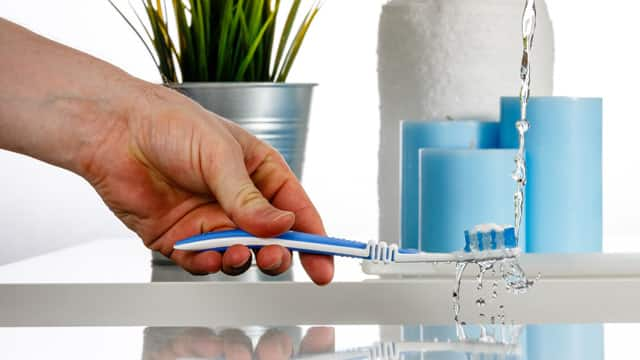With the holidays just around the corner, many people are planning trips back to their hometown and other exciting destinations. With the multitude of germs found in airports and other high-traffic public areas, you're probably aware of the risk of touching unclean surfaces. There is little evidence to suggest a toothbrush sanitiser can make a significant difference in the quality of your oral hygiene regimen, but here are some tips to help you keep your oral care routine as germ-free as possible.
The Risks of Oral Bacteria
Oral bacteria can cause a number of dental health hazards, ranging from the not-so-serious to those that can make you ill. Some of the infections resulting from oral bacteria include gingivitis, periodontal disease, oral thrush, herpes, canker sores and herpangina. Since 33 to 46 percent of Indian adults carry oral herpes, according to the University of Rochester Medical Center, preventing the bacteria from entering your mouth is essential if you want to remain free of the disease. It's also helpful to use antimicrobial toothpastes and mouthwashes.
How a Toothbrush Sanitiser Works
A significant difference exists between the ability to sanitise or disinfect a toothbrush versus the ability to sterilise it. A sanitiser is not able to actually sterilise a toothbrush, so you can't be certain it is completely bacteria-free; however, sanitising can give you peace of mind and raise your awareness of the care and cleaning of your equipment.
Toothbrush sanitisers typically function in one of two ways to kill bacteria. The first method uses steam and dry heat to cleanse the toothbrush, leaving it dry enough to avoid creating a breeding ground for bacteria. The second method consists of battery-operated sanitising equipment that generate an ultraviolet light, and the light kills the bacteria.
Keeping Your Toothbrush Clean On the Go
A report published in the Journal of Young Pharmacists notes that the use of antimicrobial solutions, air drying and toothbrush sanitiser are some of the recent methods available for preserving tooth brushes. Keep your toothbrush clean during your travels by following these care options that apply at home as well:
- Wash your hands before brushing or flossing to avoid transferring the bacteria on your hands to your toothbrush.
- Rinse the toothbrush thoroughly after use. This removes all toothpaste residue and loose debris in which bacteria may shelter.
- Store your toothbrush in an upright position so it can dry quickly, located away from the toilet bowl and sink. This avoids the toothbrush being splashed with water that could contain bacteria from either location.
- Don't share toothbrushes with anyone, regardless of how well you know him or her. Everyone has different oral bacteria, and you don't want to pass on or share each other's bacteria.
- Replace your toothbrush every three to four months to avoid using one with frayed and worn bristles.
Keeping your toothbrush clean during your travels doesn't require a toothbrush sanitiser if you follow these steps. Keep brushing and flossing daily with quality oral care products, rinse your toothbrush after each use and replace it several times a year, and you'll be as bacteria-free as any sanitiser can make you.






